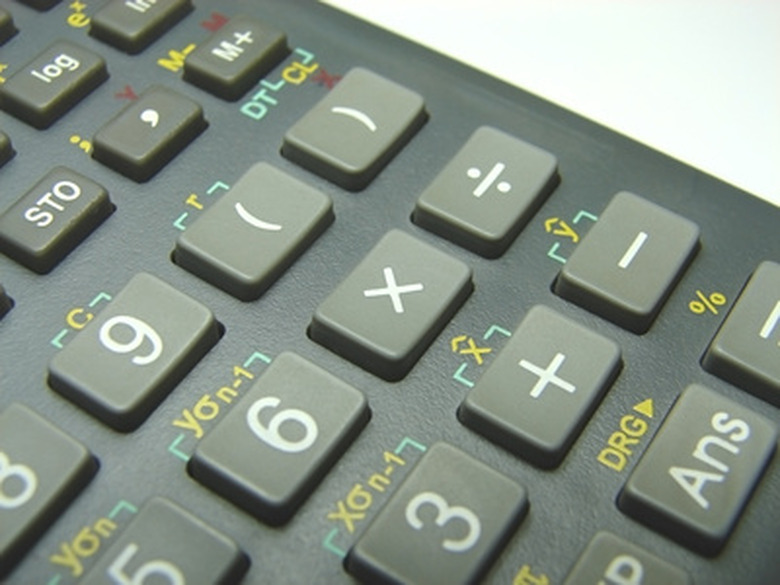Quotient Rule For Exponents
The quotient rule is one of several useful rules for exponents, whether you're doing basic multiplication or algebra. The quotient rule allows you to quickly and easily do division when exponents are involved, without having to multiply out each exponent. It also allows you to simplify complicated algebraic expressions into simple math.
Exponents
Exponents
Before you get started with the quotient rule, you need to know when to use it. The quotient rule applies only to exponents, which are common mathematical expressions. Exponents are a type of multiplication and are always written as x^n. In this case, x is the base and n is the exponent, so x is multiplied by itself n times. For example, 5^3 = 5 * 5 * 5 = 125.
The Quotient Rule
The Quotient Rule
The quotient rule is one of the exponent rules that makes it easy to divide two exponents, or powers, with the same base. The quotient rule says that when you are dividing x^m by x^n, you can simply subtract the two exponents (m-n) and keep the same base. You must always subtract the denominator from the numerator for the quotient rule to work, and x cannot equal 0.
Function
Function
You might be thinking the quotient rule is pretty convenient, but maybe you're not convinced of it. Here's the reason the quotient rule works: When you divide exponential expressions of like bases, you are simply eliminating multiples of the same number. For example, suppose you need to calculate 5^7 ÷ 5^5. At first glance, it seems very complicated. But if you write it out, it equals: 5 * 5 * 5 * 5 * 5 * 5 * 5 / 5 * 5 * 5 * 5 * 5.
You can immediately cross out the first five fives on the top and bottom of the expression, since that reduces to 1. You're left with two fives on the top, which is equal to 5^2. This is the exact same result as subtracting the exponents in the first place (7 – 5 = 2). Therefore, 5^7 ÷ 5^5 = 5^7-5 = 5^2 = 25.
Benefits
Benefits
The quotient rule is a great shortcut for basic exponent expression. You don't have to get out your calculator or write out complicated formulas–simply subtract the exponents and you're done. But the quotient rule REALLY comes into play when doing algebra. Many times you're not going to know what the value of the base is, usually expressed as x. But you can reduce x in a quotient by subtracting exponential values. Remember, you can only use the quotient rule to divide powers of like bases.
Considerations
Considerations
The quotient rule is incredibly useful when it comes to exponents, but before you go on using it, it's important to know the other rules associated with exponents:
Rules of 1: x^1=x and 1^n=1. The zero rule: You'll run into this all the time when doing quotients. When x does not equal 0, X^0=1. Negative exponent rule: A value raised to a negative exponent equals its reciprocal, so x^-n = 1/x^n. Product rule: The exact opposite of the quotient rule–when you multiply exponents with like bases, x^m * x^n = x^m+n. Power rule: When you raise a power to a power, multiply the exponents. So (x^m)^n = x^mn.
Also, zero raised to any power equals zero. It's important to use all of these rules in coordination with the quotient rule.
Cite This Article
MLA
Dombrower, Amy. "Quotient Rule For Exponents" sciencing.com, https://www.sciencing.com/quotient-rule-exponents-6622255/. 24 April 2017.
APA
Dombrower, Amy. (2017, April 24). Quotient Rule For Exponents. sciencing.com. Retrieved from https://www.sciencing.com/quotient-rule-exponents-6622255/
Chicago
Dombrower, Amy. Quotient Rule For Exponents last modified August 30, 2022. https://www.sciencing.com/quotient-rule-exponents-6622255/
